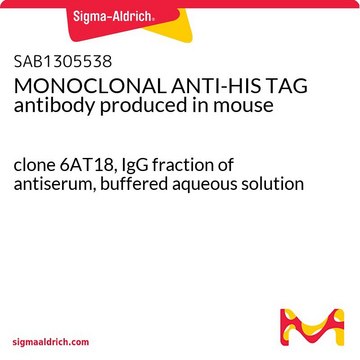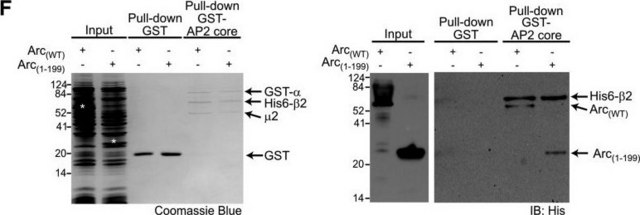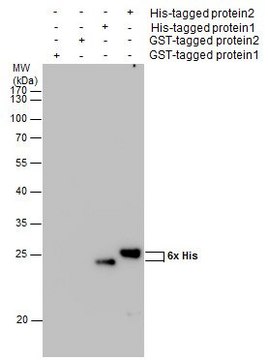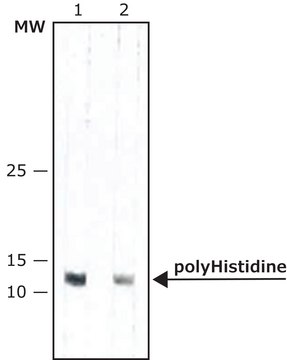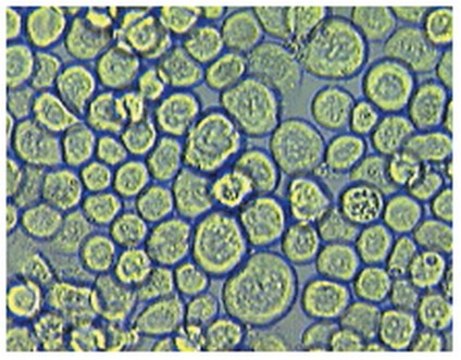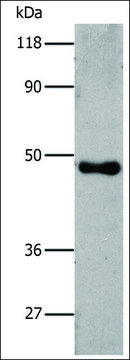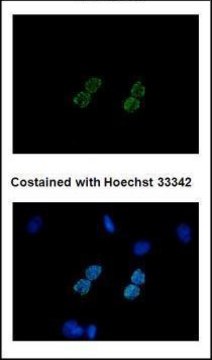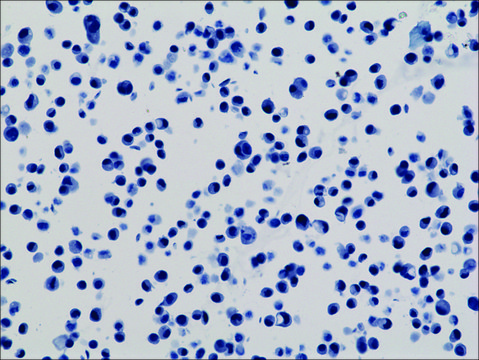11965085001
Roche
Anti-His6-Peroxidase
from mouse IgG1
Synonym(s):
antibody
Sign Into View Organizational & Contract Pricing
All Photos(1)
About This Item
UNSPSC Code:
12352203
Recommended Products
biological source
mouse
Quality Level
conjugate
peroxidase conjugate
antibody form
purified immunoglobulin
antibody product type
primary antibodies
clone
BMG-his-1, monoclonal
form
lyophilized
packaging
pkg of 50 U
manufacturer/tradename
Roche
isotype
IgG1
storage temp.
2-8°C
General description
Anti-His6-Peroxidase is a monoclonal antibody to His6-tagged proteins, conjugated to horseradish peroxidase. Anti-His6-Peroxidase specifically recognizes an epitope of six consecutive histidine residues of both natural and recombinant proteins. The antibody reacts with native and denatured histidine-tagged fusion proteins independent of the epitope-sequence location; however, it preferentially recognizes the C-terminal His6 epitope with high sensitivity.
Specificity
Anti-His6-Peroxidase specifically recognizes an epitope of six consecutive histidine residues (His6) in natural and recombinant proteins. It reacts with both native and denatured histidine-tagged fusion proteins, independent of location of the epitopesequence. However, Anti-His6-Peroxidase preferentially recognizes the C-terminal His6 epitope with high sensitivity. Anti-His6 allows specific and sensitive detection of histidine-tagged proteins irrespective of the expression system used.
The antibody recognizes an epitope of six consecutive histidine residues (His6) in natural and recombinant proteins. It reacts with both native and denatured histidine-tagged fusion proteins, independent of the epitope-sequence location.
Application
Anti-His6-Peroxidase has been used in in vitro serum stability of fusion toxins, pull-down assay and western blotting.
Anti-His6-Peroxidase is used for the detection of His6-tagged proteins in:
- ELISA (enzyme-linked immunosorbent assay)
- Western blot
Quality
Function test: Western blot using extracts from cell line expressing a recombinant His6-tagged protein.
Preparation Note
Working concentration: Working concentration of conjugate depends on application and substrate.
The following concentrations should be taken as a guideline:
The following concentrations should be taken as a guideline:
- ELISA: 100 mU/ml
- Western blot: 100mU/ml
Reconstitution
Add 1 ml double-distilled water to a final concentration of 50 U/ml.
Reconstitution should be performed for at least 10 minutes.
Reconstitution should be performed for at least 10 minutes.
Other Notes
For life science research only. Not for use in diagnostic procedures.
Not finding the right product?
Try our Product Selector Tool.
Signal Word
Warning
Hazard Statements
Precautionary Statements
Hazard Classifications
Skin Sens. 1
Storage Class Code
11 - Combustible Solids
WGK
WGK 1
Flash Point(F)
does not flash
Flash Point(C)
does not flash
Regulatory Information
常规特殊物品
Choose from one of the most recent versions:
Already Own This Product?
Find documentation for the products that you have recently purchased in the Document Library.
Hiroko Ideo et al.
The Journal of biological chemistry, 284(39), 26493-26501 (2009-07-29)
Galectins are a family of beta-galactoside-binding proteins that are widely found among animal species and that regulate diverse biological phenomena. To study the biological function of glycolipid-binding galectins, we purified recombinant Caenorhabditis elegans galectins (LEC-1-11) and studied their binding to
KaiC intersubunit communication facilitates robustness of circadian rhythms in cyanobacteria
Kitayama Y, et al.
Nature Communications, 4 (2013)
Two missense mutations in KCNQ1 cause pituitary hormone deficiency and maternally inherited gingival fibromatosis
Tommiska J, et al.
Nature Communications, 8(1) (2017)
Dinesh Adhikary et al.
The Journal of experimental medicine, 203(4), 995-1006 (2006-03-22)
Epstein-Barr virus (EBV) establishes lifelong persistent infections in humans by latently infecting B cells, with occasional cycles of reactivation, virus production, and reinfection. Protective immunity against EBV is mediated by T cells, but the role of EBV-specific T helper (Th)
Clare Sheridan et al.
Molecular cell, 31(4), 570-585 (2008-08-30)
Bax and Bak promote apoptosis by perturbing the permeability of the mitochondrial outer membrane and facilitating the release of cytochrome c by a mechanism that is still poorly defined. During apoptosis, Bax and Bak also promote fragmentation of the mitochondrial
Our team of scientists has experience in all areas of research including Life Science, Material Science, Chemical Synthesis, Chromatography, Analytical and many others.
Contact Technical Service